



Recommendations for restaurants near Santa Luzia Viewpoint with the highest ratings on Tripadvisor.
Touch each icon to get the information.
How to get there
To get to the Santa Luzia Viewpoint in Lisbon, you have several options:
1. Bus: You can take bus number 737, which will drop you off near the viewpoint. Here’s a step-by-step guide to get to the Santa Luzia Viewpoint from the bus stop:
– Take bus 737 and get off at the “Rua dos Lagares” or “Rua de São Tomé” stop.
– From the stop, head east on Rua dos Lagares or Rua de São Tomé.
– Continue straight on Rua dos Lagares until you reach Rua de Santa Luzia.
– Turn left onto Rua de Santa Luzia and continue walking.
– You will see signs that will guide you to the Santa Luzia Viewpoint.
2. Bus and Tram: Another option is to take the bus to a stop where you can catch a tram and then use the tram to reach the viewpoint. Here are the possible combinations:
– Bus 737: You can take bus 737 to the “Rua dos Lagares” or “Rua de São Tomé” stop. From there, walk to the nearest tram stop and take Tram 28E towards Martim Moniz. Get off at the “Miradouro de Santa Luzia” stop, and you will find the viewpoint just a short walk away.
– Bus 734: If you are in another part of the city, you can take bus 734 to the “Rua dos Anjos” stop. From there, walk to the nearest tram stop and take Tram 28E towards Martim Moniz. Get off at the “Miradouro de Santa Luzia” stop, and you will find the viewpoint just a short walk away.
To get to the Santa Luzia Viewpoint in Lisbon, I advise using the metro to Martim Moniz station and then taking the tram directly to the viewpoint. However, I can suggest walking to the viewpoint as well, as the tram stop often has long queues with many tourists and locals waiting. The walking distance from Martim Moniz Square to the Santa Luzia Viewpoint is approximately 1 kilometer (0.6 miles) and takes around 10-15 minutes. Here’s a revised version of the instructions:
1. Metro and Tram:
– Take the metro to Martim Moniz station using the appropriate metro line for your starting point.
– Exit the metro station and look for the tram stop.
– Take Tram 28E, which operates along a scenic route through the city.
– Stay on the tram until you reach the “Miradouro de Santa Luzia” stop, which is the closest stop to the viewpoint.
– From there, follow the signs or ask for directions to the Santa Luzia Viewpoint.
2. Walking:
– Take the metro to Martim Moniz station using the appropriate metro line for your starting point.
– Exit the metro station and head southeast on Martim Moniz Square.
– Continue straight on Rua da Palma.
– After a short distance, turn right onto Largo das Portas do Sol.
– Continue walking uphill on Rua São Tomé until you reach the Santa Luzia Viewpoint.
– The walking distance from Martim Moniz Square to the Santa Luzia Viewpoint is approximately 1 kilometer (0.6 miles) and takes around 10-15 minutes.
Please note that walking allows you to avoid potential crowds and long queues at the tram stop, providing a more leisurely and flexible experience.
Here are the detailed instructions to reach the Santa Luzia Viewpoint by metro from any point on the three main metro lines, indicating the scenarios and necessary transfers:
Scenario 1: Blue Line
– From any point on the blue line, take the metro in the direction of Santa Apolónia.
– Transfer at Baixa-Chiado station to the green line towards Cais do Sodré.
– Continue on the green line and get off at Martim Moniz station.
Scenario 2: Green Line
– From any point on the green line, take the metro in the direction of Cais do Sodré.
– Get off at Martim Moniz station.
Scenario 3: Yellow Line
– From any point on the yellow line, take the metro in the direction of Rato.
– Transfer at Baixa-Chiado station to the green line towards Cais do Sodré.
– Continue on the green line and get off at Martim Moniz station.
Once you are at Martim Moniz station, I recommend walking to the Santa Luzia Viewpoint instead of waiting for the tram due to potential queues. Follow the previous instructions to walk from Martim Moniz to the viewpoint.
I hope these instructions are clear and help you reach the Santa Luzia Viewpoint from any point on the blue, green, and yellow metro lines in Lisbon.

Above in the photo gallery you will find the map in real size.
Here are the complete instructions for the three scenarios from the stations of Santa Apolónia, Rossio, and Cais do Sodré to the Miradouro de Santa Luzia.
Scenario 1: Santa Apolónia Line
If you are at any point on the line heading to Santa Apolónia, take the train to Santa Apolónia station.
Upon arriving at Santa Apolónia station, exit the station and locate the nearest bus stop.
Take Bus 734 towards Graça.
Get off the bus at Largo das Portas do Sol.
From there, walk approximately 5 minutes to Miradouro de Santa Luzia. Follow the signs and enjoy the panoramic views.
Scenario 2: Rossio Line
If you are at any point on the line heading to Rossio, take the train to Rossio station.
Upon arriving at Rossio station, exit the station and walk towards Martim Moniz Square.
From Martim Moniz Square, you have the option to take either Tram 12E or Tram 28E.
Tram 12E: Take Tram 12E towards Graça.
Tram 28E: Take Tram 28E towards Graça.
Alight from the tram at Largo das Portas do Sol.
From there, walk approximately 5 minutes to Miradouro de Santa Luzia. Follow the signs and enjoy the panoramic views.
Scenario 3: Cais do Sodré Line
If you are at any point on the line heading to Cais do Sodré, take the train to Cais do Sodré station.
Upon arriving at Cais do Sodré station, exit the station and locate the nearest bus stop.
Take Bus 706 towards Marvila.
Get off the bus at Largo das Portas do Sol.
From there, walk approximately 5 minutes to Miradouro de Santa Luzia. Follow the signs and enjoy the panoramic views.
I hope these instructions are clear and assist you in reaching the Miradouro de Santa Luzia from each of the three main stations in Lisbon. Remember to check train, tram, and bus timetables to plan your journey accordingly. Enjoy your visit to the miradouro!
“Explore the beauty of Miradouro de Santa Luzia with ease!
Simply click on the ‘Take me to Miradouro de Santa Luzia’ button below, and it will automatically open the Google Maps application on your mobile device or computer.
The starting location will already be configured, so you just need to follow the step-by-step directions provided by Google Maps. Enjoy a hassle-free journey as you’re guided through the best routes to reach this breathtaking viewpoint in Lisbon. Exploring the city couldn’t be easier with the help of Google Maps!”
Please ensure to add the appropriate button on your website with the necessary functionality to open the Google Maps application with the preconfigured location.
Once you arrive at the site, listen to a brief explanation of the history of the place.
- Audio in English
- Audio en français
- Audio en Español
- Audio auf Deutsch





Choose Your Language.
- Reading in English
- Lire en Français
- Lectura en Español
- Lesen auf Deutsch
The Santa Luzia Viewpoint is located in the charming neighborhood of Alfama, on the hill of São Jorge, and offers an impressive panoramic view of Lisbon and the Tagus River. This viewpoint is highly appreciated by both tourists and locals due to its privileged location and rich history.
The history of the Santa Luzia Viewpoint dates back to the 12th century when the Arabs ruled the Iberian Peninsula. During that time, this hill was known as “Al-hamma” and was a fortified area. It was a strategic place to control access to the port and the city of Lisbon.
In the 18th century, the Church of Santa Luzia was built, which is located near the viewpoint. This church was constructed in honor of Saint Luzia, the patron saint of sight, and can still be visited today. Its blue and white facade and beautiful azulejos (Portuguese tiles) are a testimony to the baroque splendor of the time.
The viewpoint itself was designed in the 1930s by the architect Cassiano Branco. It was designed to enhance the beauty of the surroundings and offer visitors an unparalleled view of the city. From here, you can admire the terracotta roofs of Alfama, the towers of São Jorge Castle, and the majestic Tagus River.
In addition to its historical and architectural value, the Santa Luzia Viewpoint is a place full of tradition and culture. In the surroundings, you will find several typical Portuguese azulejos that tell the story of Lisbon and its heroes. These azulejos, known as “history tiles,” are a distinctive feature of the city and add an additional charm to this place.
It is also important to mention that the Santa Luzia Viewpoint is a perfect place to enjoy the local gastronomy. There are several restaurants and cafes nearby where you can taste delicious Portuguese dishes such as bacalhau à Brás, grilled sardines, or the famous pastéis de nata.
In summary, the Santa Luzia Viewpoint is a hidden treasure in Lisbon that combines history, architectural beauty, and spectacular views. I hope you have enjoyed this brief introduction to its history and that you can fully appreciate the magnificence of this place. Now, I invite you to enjoy the views and capture unforgettable memories of the beautiful city of Lisbon from this iconic viewpoint!
Le Mirador de Santa Luzia se trouve dans le charmant quartier d’Alfama, sur la colline de São Jorge, et offre une vue panoramique impressionnante sur Lisbonne et le fleuve Tage. Ce point de vue est très apprécié tant par les touristes que par les habitants en raison de son emplacement privilégié et de son riche passé historique.
L’histoire du Mirador de Santa Luzia remonte au XIIe siècle, lorsque les Arabes régnaient sur la péninsule ibérique. À cette époque, cette colline était connue sous le nom d'”Al-hamma” et constituait une zone fortifiée. C’était un lieu stratégique pour contrôler l’accès au port et à la ville de Lisbonne.
Au XVIIIe siècle, l’Église de Santa Luzia a été construite, située à proximité du mirador. Cette église a été érigée en l’honneur de Sainte Luzia, la sainte patronne de la vue, et peut encore être visitée de nos jours. Sa façade bleue et blanche ainsi que ses magnifiques azulejos témoignent de la splendeur baroque de l’époque.
Le mirador lui-même a été conçu dans les années 1930 par l’architecte Cassiano Branco. Il a été conçu pour mettre en valeur la beauté de l’environnement et offrir aux visiteurs une vue incomparable sur la ville. D’ici, vous pourrez admirer les toits en terre cuite d’Alfama, les tours du château de São Jorge et le majestueux fleuve Tage.
Outre sa valeur historique et architecturale, le Mirador de Santa Luzia est un lieu riche en traditions et en culture. Aux alentours, vous trouverez plusieurs azulejos typiquement portugais qui racontent l’histoire de Lisbonne et de ses héros. Ces azulejos, appelés “azulejos de histoire”, sont une caractéristique distinctive de la ville et ajoutent un charme supplémentaire à cet endroit.
Il est également important de mentionner que le Mirador de Santa Luzia est un endroit parfait pour profiter de la gastronomie locale. Plusieurs restaurants et cafés se trouvent à proximité où vous pourrez déguster de délicieux plats portugais tels que le bacalhau à bras, les sardines grillées ou les célèbres pastéis de nata.
En résumé, le Mirador de Santa Luzia est un trésor caché à Lisbonne qui allie histoire, beauté architecturale et vues spectaculaires. J’espère que vous avez apprécié cette brève introduction à son histoire et que vous pourrez pleinement apprécier la magnificence de cet endroit. Maintenant, je vous invite à profiter des vues et à capturer des souvenirs inoubliables de la magnifique ville de Lisbonne depuis ce point de vue emblématique !
El Mirador de Santa Luzia se encuentra en el encantador barrio de Alfama, en la colina de São Jorge, y ofrece una vista panorámica impresionante de Lisboa y el río Tajo. Este mirador es muy apreciado tanto por los turistas como por los lugareños debido a su ubicación privilegiada y su rica historia.
La historia del Mirador de Santa Luzia se remonta al siglo XII, cuando los árabes gobernaban la península ibérica. Durante ese tiempo, esta colina era conocida como “Al-hamma” y era una zona fortificada. Fue un lugar estratégico para controlar el acceso al puerto y la ciudad de Lisboa.
En el siglo XVIII, se construyó la Iglesia de Santa Luzia, que se encuentra cerca del mirador. Esta iglesia fue construida en honor a Santa Luzia, la patrona de la vista, y todavía se puede visitar hoy en día. Su fachada azul y blanca y sus hermosos azulejos son un testimonio del esplendor barroco de la época.
El mirador en sí fue diseñado en la década de 1930 por el arquitecto Cassiano Branco. Se diseñó para realzar la belleza del entorno y ofrecer a los visitantes una vista inigualable de la ciudad. Desde aquí, pueden admirar los techos de terracota de Alfama, las torres del castillo de São Jorge y el majestuoso río Tajo.
Además de su valor histórico y arquitectónico, el Mirador de Santa Luzia es un lugar lleno de tradición y cultura. En los alrededores, encontrarán varios azulejos típicos portugueses que cuentan la historia de Lisboa y sus héroes. Estos azulejos, conocidos como “azulejos de historia”, son una característica distintiva de la ciudad y brindan un encanto adicional a este lugar.
También es importante mencionar que el Mirador de Santa Luzia es un lugar perfecto para disfrutar de la gastronomía local. Hay varios restaurantes y cafés cerca donde podrán degustar deliciosos platos portugueses, como el bacalao a bras, las sardinas asadas o los famosos pasteis de nata.
En resumen, el Mirador de Santa Luzia es un tesoro escondido en Lisboa que combina historia, belleza arquitectónica y vistas espectaculares. Espero que hayan disfrutado de esta breve introducción a su historia y que puedan apreciar plenamente la magnificencia de este lugar. ¡Ahora los invito a disfrutar de las vistas y capturar recuerdos inolvidables de la hermosa ciudad de Lisboa desde este icónico mirador!
Der Mirador de Santa Luzia befindet sich im charmanten Viertel Alfama auf dem Hügel von São Jorge und bietet einen beeindruckenden Panoramablick auf Lissabon und den Fluss Tejo. Dieser Aussichtspunkt ist sowohl bei Touristen als auch bei Einheimischen aufgrund seiner privilegierten Lage und seiner reichen Geschichte sehr beliebt.
Die Geschichte des Mirador de Santa Luzia reicht bis ins 12. Jahrhundert zurück, als die Araber die Iberische Halbinsel beherrschten. Zu dieser Zeit war dieser Hügel als “Al-hamma” bekannt und war eine befestigte Zone. Es war ein strategischer Ort, um den Zugang zum Hafen und zur Stadt Lissabon zu kontrollieren.
Im 18. Jahrhundert wurde die Kirche Santa Luzia erbaut, die sich in der Nähe des Aussichtspunktes befindet. Diese Kirche wurde zu Ehren der heiligen Luzia, der Schutzpatronin des Augenlichts, errichtet und kann auch heute noch besichtigt werden. Ihre blau-weiße Fassade und wunderschönen Azulejos sind ein Zeugnis für den barocken Glanz dieser Zeit.
Der Aussichtspunkt selbst wurde in den 1930er Jahren vom Architekten Cassiano Branco entworfen. Er wurde konzipiert, um die Schönheit der Umgebung hervorzuheben und den Besuchern einen unvergleichlichen Blick auf die Stadt zu bieten. Von hier aus können Sie die terrakottafarbenen Dächer von Alfama, die Türme der Burg São Jorge und den majestätischen Fluss Tejo bewundern.
Neben seinem historischen und architektonischen Wert ist der Mirador de Santa Luzia ein Ort voller Tradition und Kultur. In der Umgebung finden Sie mehrere typisch portugiesische Azulejos, die die Geschichte von Lissabon und seinen Helden erzählen. Diese Azulejos, bekannt als “Geschichtsfliesen”, sind ein charakteristisches Merkmal der Stadt und verleihen diesem Ort zusätzlichen Charme.
Es ist auch erwähnenswert, dass der Mirador de Santa Luzia ein perfekter Ort ist, um die lokale Gastronomie zu genießen. In der Nähe gibt es mehrere Restaurants und Cafés, in denen Sie köstliche portugiesische Gerichte wie Bacalhau à Brás, gegrillte Sardinen oder die berühmten Pastéis de Nata probieren können.
Zusammenfassend ist der Mirador de Santa Luzia ein verborgener Schatz in Lissabon, der Geschichte, architektonische Schönheit und spektakuläre Ausblicke vereint. Ich hoffe, Sie haben diese kurze Einführung in seine Geschichte genossen und können die Pracht dieses Ortes voll und ganz schätzen. Jetzt lade ich Sie ein, die Aussicht zu genießen und unvergessliche Erinnerungen an die wunderschöne Stadt Lissabon von diesem ikonischen Aussichtspunkt aus einzufangen!

Closest Nearby Destination: Discover the Next Stop from Here
Cathedral of Lisbon Unveiled: Discover the Majesty of Lisbon’s Spiritual Gem
a Viewpoint
The distance between Santa Luzia Viewpoint and Lisbon Cathedral, also known as Sé de Lisboa, is approximately 300 meters.
Related products
-
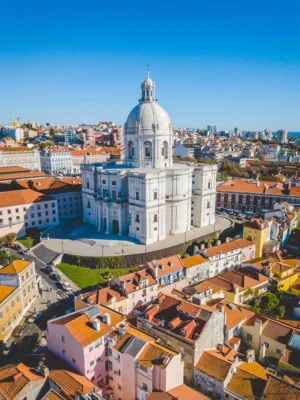
The National Pantheon of Lisbon: Exploring Historical and Cultural Grandeur
-

Palácio e Parque Biester: Immerse Yourself in the Natural and Architectural Beauty of Sintra
-
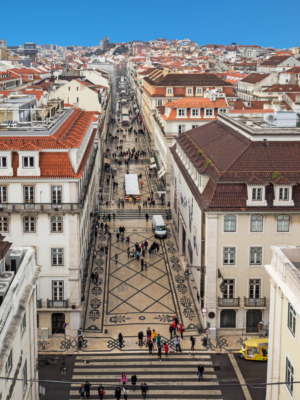
Rua Augusta Street – Lisbon’s Vibrant Pedestrian Street
-

Unveiling the Splendor of the Moorish Castle: Discovering Sintra’s Historic Gem.
- Lisboa, Architecture, Castles, Gardens and Parks, Historic Sites, Historical Monuments, Landmarks, Places, Viewpoints

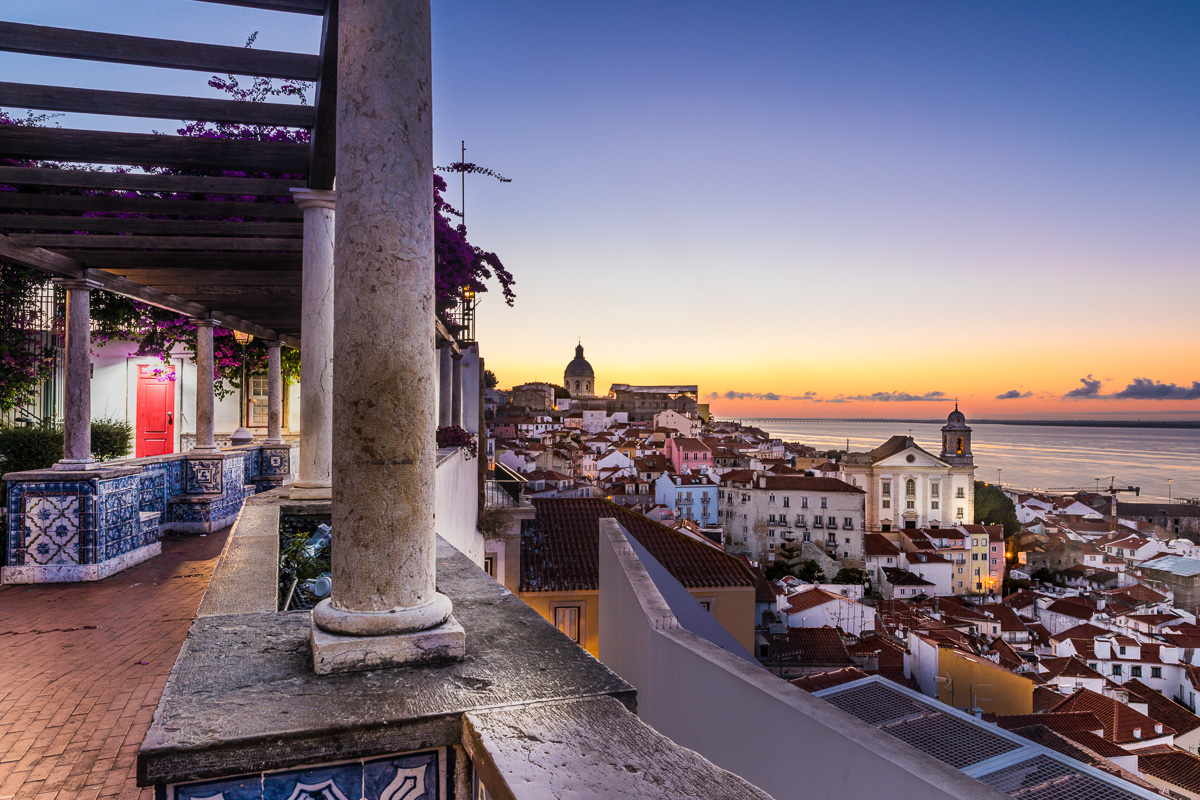
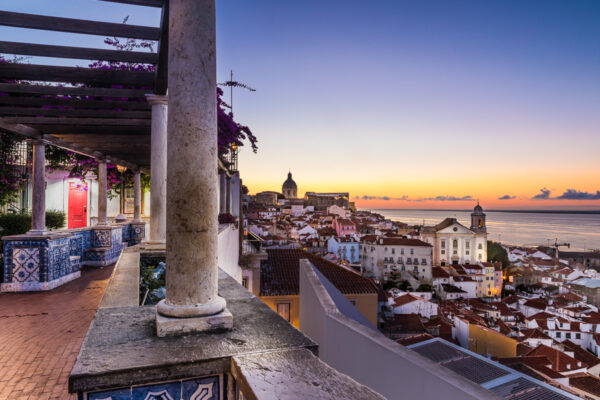
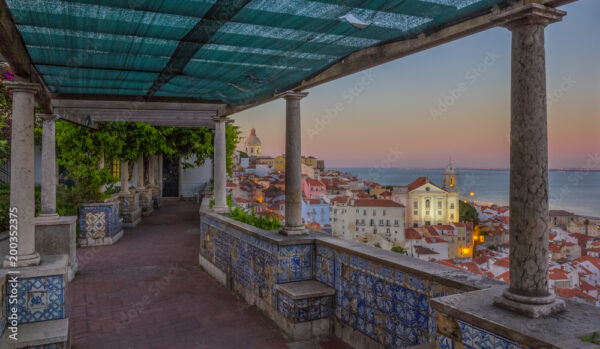



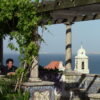



Reviews
There are no reviews yet.